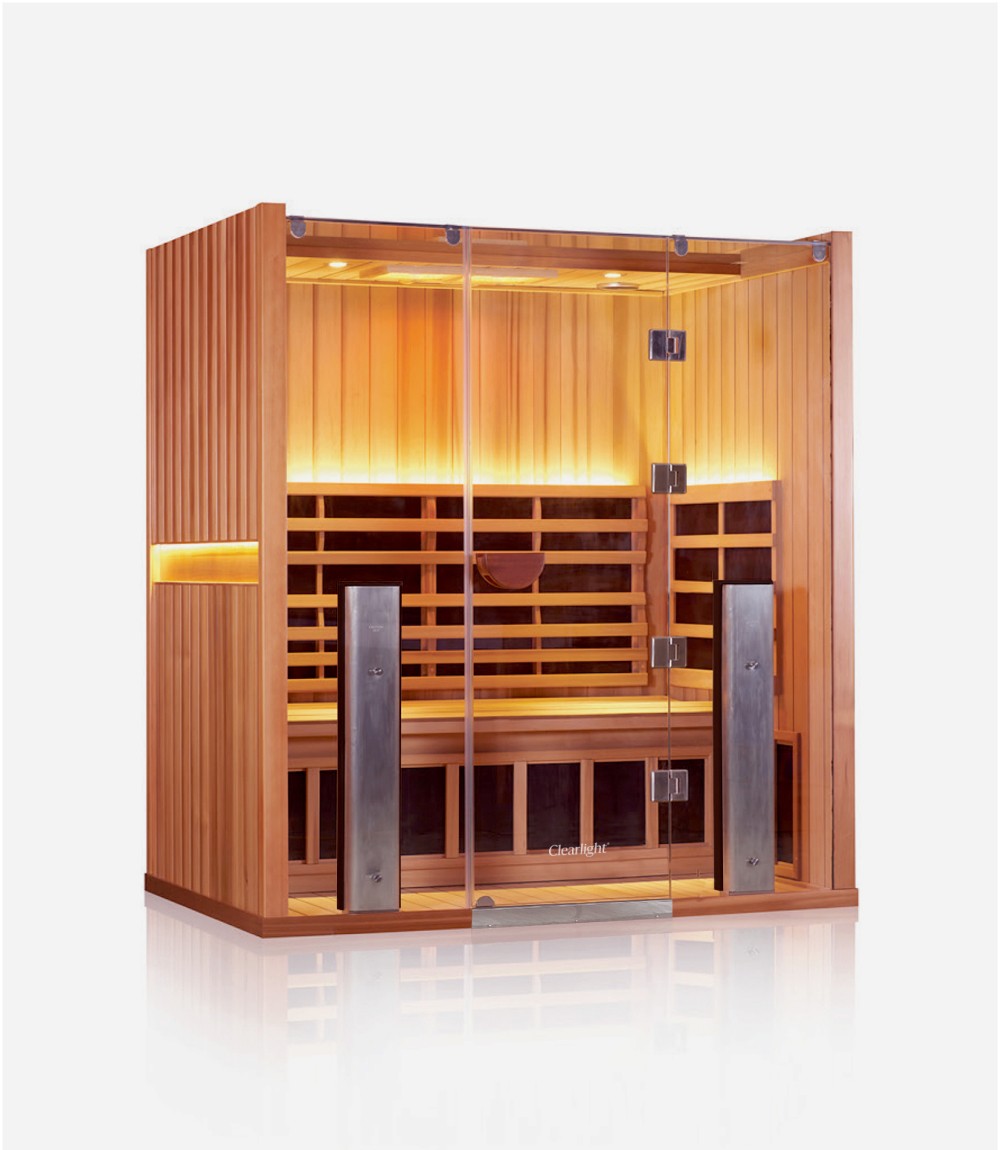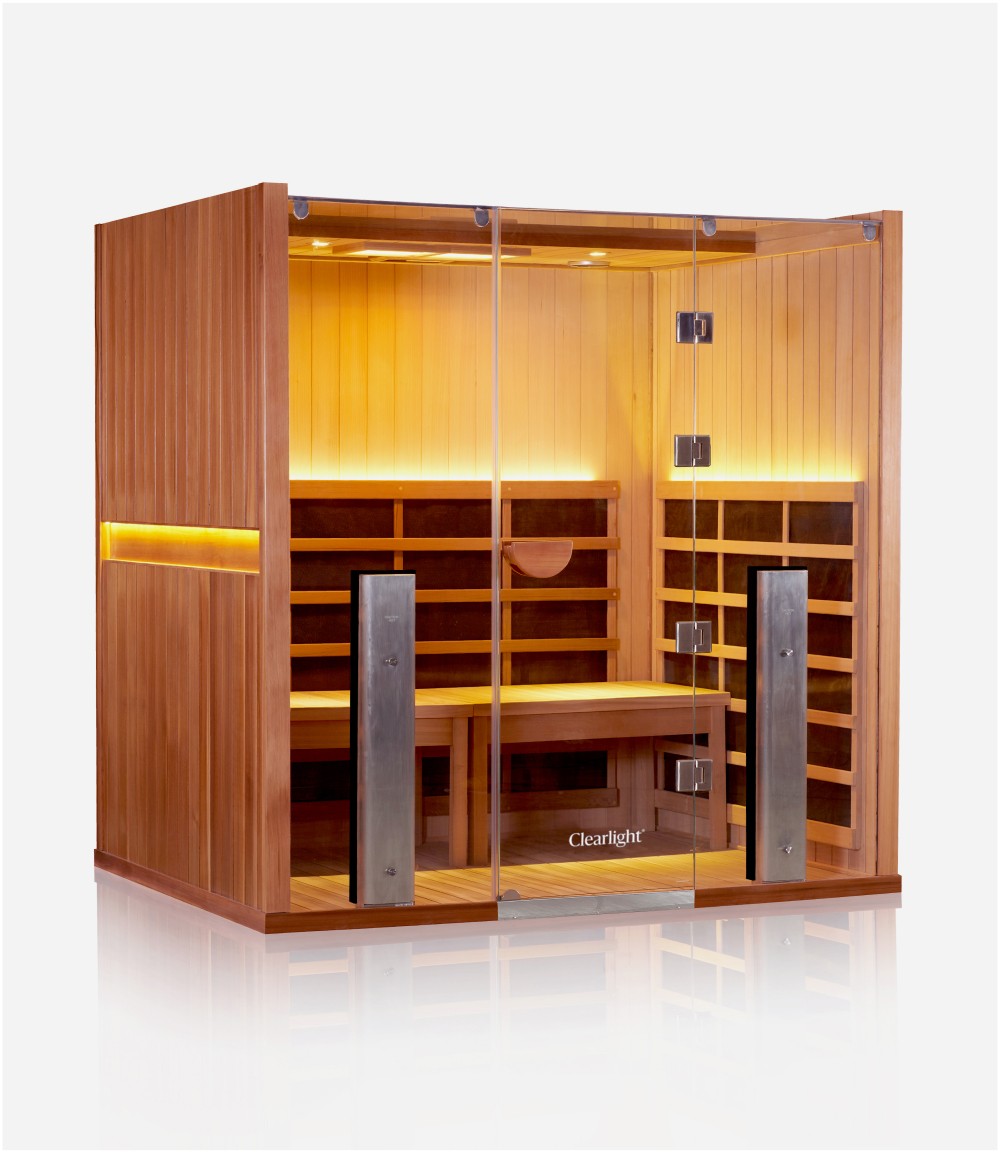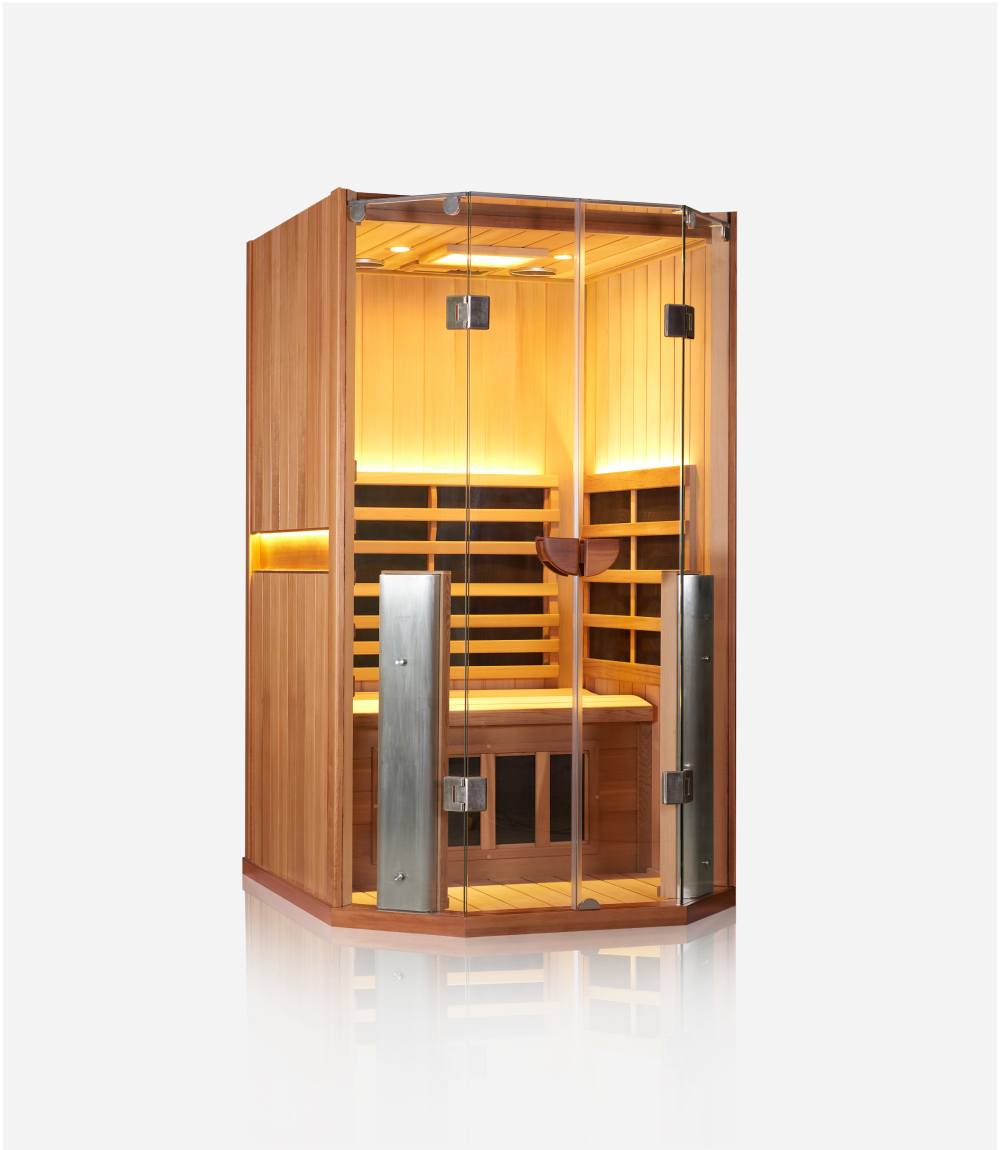If you’re exploring the world of infrared saunas, it’s essential to understand the different types of heaters that power them—and why this choice matters more than you might think. Unlike traditional Finnish saunas, which rely on scorching air temperatures to warm you indirectly, infrared saunas use radiant energy to penetrate your skin and muscles directly. This innovative approach delivers a gentler, more efficient experience, operating at lower ambient temperatures (typically 110–140°F vs. 160–200°F) while still promoting muscle recovery, relaxation, and detoxification.
But the magic lies in the details: not all infrared heaters are the same. Each type—from full-spectrum to carbon, ceramic, and beyond—emits unique wavelengths of infrared light (IR-A, IR-B, IR-C) that influence how deeply the heat penetrates your body, how quickly it warms up, and even how it supports your wellness routine.
In this guide, we’ll break down the six core types of infrared heaters, their pros and cons, and how factors like sauna size, heat intensity preferences, and budget shape your ideal setup. Whether you’re an athlete chasing faster recovery, a mindfulness enthusiast seeking serene sessions, or simply someone prioritizing holistic wellness, understanding these differences ensures your sauna becomes a tailored sanctuary—not just another appliance.
1. Full-spectrum heaters
Full-spectrum infrared heaters are the most comprehensive solution, emitting heat across the entire range of infrared light. This means you benefit from both surface-level comfort and deep-tissue warming, making them ideal for those looking to support muscle soreness relief and full-body relaxation after intense training sessions.
These heaters are quick to warm up, making them perfect for short yet impactful sessions. They are often found in premium models, such as the Clearlight® Sanctuary range, and are suited for users who want both performance and luxury.
- Heating element: Halogen bulbs or advanced ceramic-carbon combinations.
- Wavelengths: Near (IR-A), Mid (IR-B), and Far infrared (IR-C).
- Use case: Ideal for users who want all-around heat exposure—recovery, wellness, and comfort in one.
- Energy efficiency: Moderate to high.
- Downside: Higher energy consumption and cost; may be too intense for heat-sensitive users.
2. Carbon heaters
Carbon heaters provide gentle, evenly distributed warmth, making them excellent for longer sessions or those who are sensitive to intense heat. The heat is subtle and wraps around the body uniformly, encouraging a calming and meditative experience.
They’re energy-efficient and have a long lifespan, which also makes them an economical option for regular use.
- Heating element: Carbon fibre sheets or panels.
- Wavelengths: Far infrared (IR-C).
- Use case: Great for deep relaxation or meditation-focused sessions.
- Energy efficiency: High.
- Downside: Slower to reach peak temperature; doesn’t offer deep muscle penetration.
3. Ceramic heaters
Ceramic heaters are known for their focused heat delivery and fast warm-up times. They’re excellent for those who prefer short, high-intensity sessions or want to target specific muscle areas after strength training.
While they are affordable and powerful, ceramic heaters may produce uneven heat and require users to sit directly in front of them for optimal effect.
- Heating element: Ceramic rods or plates with resistance wires.
- Wavelengths: Mid and Far infrared (IR-B & IR-C).
- Use case: Suited for those who want quicker warm-ups or targeted heat for muscle tension.
- Energy efficiency: Moderate.
- Downside: Less evenly distributed warmth; higher surface temperature.

4. Tourmaline heaters
Tourmaline heaters provide a gentle warmth that many find mentally soothing. These emit negative ions when heated, which enhance the ambient environment and contribute to a sense of wellbeing.
Their heat output is mild, making them suitable for users seeking a peaceful experience rather than deep-tissue stimulation.
- Heating element: Ceramic base coated with tourmaline.
- Wavelengths: Far infrared (IR-C), plus negative ion emission.
- Use case: Ideal for those focused on relaxation, mood balance, and mindfulness.
- Energy efficiency: Moderate.
- Downside: Lower intensity; maintenance may be more frequent due to mineral coatings.
5. Quartz heaters
Quartz heaters are all about intensity. They heat up fast and deliver a strong, focused warmth, penetrating deeper muscle layers. Because of this, they’re often favoured by athletes who want to soothe post-workout muscle fatigue quickly.
However, due to the high intensity, they may not be suited for prolonged use or heat-sensitive individuals.
- Heating element: Quartz tubes or glass elements.
- Wavelengths: Near and Mid infrared (IR-A & IR-B).
- Use case: Best for post-training relief and those needing quick, high-heat sessions.
- Energy efficiency: Moderate.
- Downside: Uneven heating in larger saunas; glare can be uncomfortable.
6. Hybrid heaters
Hybrid heaters combine the benefits of multiple heating types, offering customisable heat experiences. With both deep penetration and ambient warmth, they’re ideal for households or wellness spaces where multiple users have different preferences.
The layered heat delivery ensures you get the advantages of fast warm-up, deep heat, and soothing warmth. All in one session.
- Heating element: Combinations of ceramic, carbon, and/or full-spectrum.
- Wavelengths: Mixed – Near, Mid, and Far infrared.
- Use case: Versatile use across household needs—great for couples, families, or recovery routines.
- Energy efficiency: Balanced.
- Downside: Higher upfront cost; more complex system to maintain.
Comparison table: Infrared heater types
| Heater Type | Wavelengths | Strengths | Best For | Energy Efficiency | Considerations |
| Full-spectrum | Near, Mid, Far (IR-A/B/C) | Broad heat delivery, deep penetration | Balanced wellness & muscle recovery | Medium-High | High cost and intensity |
| Carbon | Far (IR-C) | Gentle, even heat | Long sessions, heat-sensitive users | High | Slower warm-up, lower intensity |
| Ceramic | Mid, Far (IR-B/C) | Fast warm-up, focused heat | Spot targeting, compact saunas | Medium | Hot surfaces, uneven heat distribution |
| Tourmaline | Far (IR-C) | Gentle warmth, calming effect | Relaxation and air freshness | Medium | Weaker heat, periodic upkeep |
| Quartz | Near, Mid (IR-A/B) | Rapid, powerful heat | Athletes, fast recovery sessions | Medium | Glare and localised heat only |
| Hybrid | Multi-wavelength | Adaptive, full-body comfort | Multi-user wellness spaces | Balanced | Expensive and more technical to install |
What are key considerations when choosing the right heater?
1. Sauna size
The size of your infrared sauna is a crucial factor when selecting your heater type. In compact models (1–2 people), full-spectrum or ceramic heaters offer direct warmth in a confined space. For larger saunas (3–4+ people), carbon or hybrid heaters provide more even heat distribution throughout the cabin.
2. Desired heat intensity
Choose your heater based on how strong and direct you want the warmth to be:
-
Mild intensity: Carbon or tourmaline.
-
Medium intensity: Ceramic or hybrid.
-
High intensity: Full-spectrum or quartz.
3. Maintenance and upkeep
Carbon and hybrid heaters generally require less maintenance. Ceramic and quartz models may need occasional inspection or part replacement due to higher temperatures and wear.
4. Wavelength preference
Your experience will also depend on which part of the infrared spectrum you want:
-
IR-A (near): Penetrates deeply into the tissue, useful for targeting muscle soreness.
-
IR-B (mid): Warms soft tissue and joints.
-
IR-C (far): Stays close to the skin, perfect for comfort and calming sessions.
5. Budget considerations
Cost is an important factor when selecting an infrared sauna heater. Full-spectrum and quartz heaters tend to be more expensive upfront but offer a more intensive and versatile heating experience. In contrast, carbon and ceramic heaters are generally more affordable and energy-efficient, which can help reduce long-term operating costs.
Final thoughts
Selecting the right heater is one of the most important choices you’ll make when designing your home infrared sauna. It shapes your experience—whether that means easing muscle soreness after a long training session or enjoying mindful relaxation before bedtime.
At Clearlight®, our Sanctuary models come equipped with advanced True Wave® full-spectrum heaters, delivering safe, balanced, and energy-efficient heat across the full infrared range. From daily wellness rituals to post-workout recovery, our technology is trusted by athletes, wellness professionals, and health-conscious users across Europe.
Explore our full range or contact us for recommendations tailored to your space, lifestyle, and goals.










Share:
Best home infrared sauna of 2025 – Clearlight® saunas featured in The Times